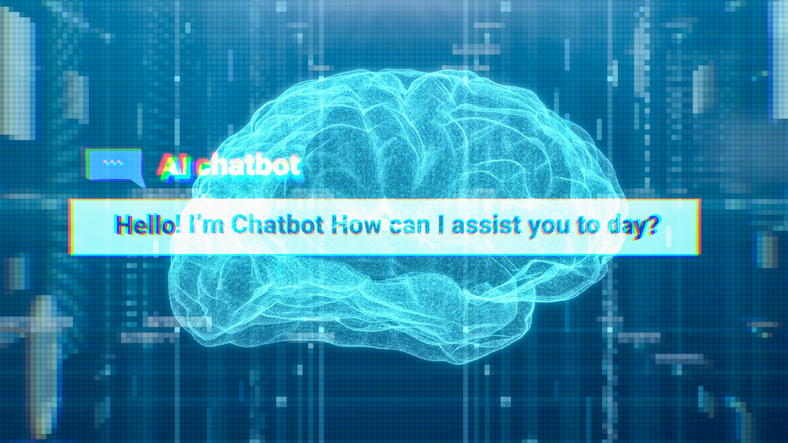In the movie “2 Days in the Valley,” two full days of betrayal, revenge and redemption drag us through. It takes a while to develop, and for those who enjoy this brand of dark comedy, suit yourself. For me, I value my time. I liken this to how time is so often lost when poorly used — and I’ve come to see that AI can help us avoid this.
For example, many workers spend two full workdays of each week emailing and meeting, according to a Microsoft study. This makes it difficult to accomplish tasks and highlights the challenges of managing time effectively in the workplace. It also offers insight into work patterns and reinforces the urgency of improving workplace efficiency.
Harnessing the benefits of AI can help increase efficiency and effectiveness, which enhances productivity. It would seem obvious that improving one’s productivity perpetuates greater wellness: We should all be finding ways to tackle time lost, like “2 days in the valley.”
I have uncovered benefits of leveraging AI in my work, and while there are understandable concerns, making use of AI to spend less time on lower cognitive tasks (like reading email) and more on creativity and the pursuit of student excellence helps everyone in the school community. Let’s examine a few of my most time-tested, efficient and effective techniques for using AI to elevate productivity — techniques educators consistently rave about — which are simple and effective.
How AI can help reduce email chores
The Microsoft study about lost time on email and meetings underscores the need to reduce time on email. Have you ever received an email that is entirely too long, has too many repeated themes and is filled with lengthy, irrelevant information? It isn’t until the seventh paragraph that you find something necessary to respond to!
The sender needs to improve their email writing skills. They could follow advice like these 12 do’s and don’ts of email etiquette, but that might require a whole culture shift, nevermind if it comes from a superior. How do you say to your boss (or the parent who gives their child’s life story): “Excuse me, but please stop writing me long, irrelevant emails?” (If you haven’t experienced this, let me know of any openings in your school!)
The reality is that we all receive these emails, and too many of them contain unnecessary information. When I get an email like this now, I prompt AI to give me what matters:
Summarize this email, and tell me the parts I need to know about and respond to.
I have found that this reduces about 80% of the length of my incoming email, allowing me to immediately identify what I must know and respond to. This is also critical with time-sensitive information. I do this frequently with certain emails. Eliminating so much of the extraneous content is invaluable! Before plugging an email into AI, however, remember to use a quick find/replace method to remove any identifiable information, especially with children, as you paste the content into a chatbot.
How AI can help analyze feedback
How many of us have wanted, even needed, valuable feedback from members of our school community and defaulted to the old Likert scale for responses: most unlikely, unlikely, likely, most likely? What does that even mean?
I discovered a way to analyze subjective form feedback, that is open-ended and gives much deeper meaning. This has been invaluable to discovering the true input from respondents and has revolutionized how I seek and respond to feedback. Creativity unleashed!
I’ve described this process in detail before, but, basically, the way to save hours of time of analyzing while making the feedback far more authentic is to paste the feedback along with the prompt:
Identify trends and patterns in these form responses and make recommendations based on the results.
How AI can help write a letter of recommendation
Writing a letter of recommendation can be time-consuming, but it is one of those tasks that you want to do. I have become accustomed to receiving 10 or more of these every month or so. How can we possibly give these letters our proper attention to help an aspiring individual we care about, be it for a summer job, a graduate program or promotion? Even a fast writer like me needs a half hour to craft a good letter of recommendation. No more!
I discovered a shortcut that made this 30 minutes happen in three to five minutes. I ask the candidate to send me their resume, then I copy and paste their resume into the AI chatbot with the prompt:
Write me a letter of recommendation based on this resume.
Then I just need to go back and add my literary voice here and there and replace those quirky words AI loves to include, like “unwavering.”
Deliberate information input is the key to these and more ways to economize our work and ensure accuracy. Making use of AI to save time and increase effectiveness saved me two days in the valley. Instead, I got to use those hours for creative pursuits or even wellness time, like two days at the beach! I come back refreshed and ready to troubleshoot the truly important work, knowing I can use simple techniques like these that remarkably improve my productivity. That has been a game-changer.
Opinions expressed by SmartBrief contributors are their own.
_________________________
Subscribe to SmartBrief’s FREE email newsletter to see the latest hot topics on edtech. It’s among SmartBrief’s more than 250 industry-focused newsletters.
